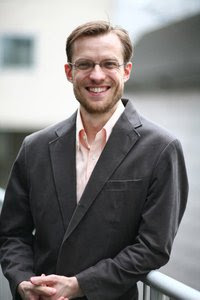Opportunities and Challenges of Greening ICT: Making Cloud Computing Green
/ Friends of Europe arranged a roundtable and I was an introductory discussant on “Making Cloud Computing Green” together with:
Friends of Europe arranged a roundtable and I was an introductory discussant on “Making Cloud Computing Green” together with:> Molly Webb, Head of Smart Technology, The Climate Group
> Peter Thomond, Senior Consultant & Research Manager at The Think Play Do Group at Imperial College London
> Arthur Mickoleit, Policy Analyst, Information Economy Group, OECD
My initial recommendations was for ICT companies, customers and policy makers to work on the following areas (% of resources on each also indicated).
1. Cloud computing (1%):
> Building the first data centre that is a net producer of renewable energy. Together with this project present a plan to make the whole ICT system net producer of renewable energy.
2. The whole ICT system, e.g. the 21st Century Infrastructure (4%)
> Support multifunctional devices and where possible make them independent of grid charging.
> Support a module approach where devices are upgraded instead of thrown away when one part needs to be upgraded/replaced.
> Support a circular economy where re-use of material is promoted.
3. The use of ICT, Greening with ICT (95%)
> Introduce an alarm bell/flag to be used when the Commission or member states are introducing policies that should include ICT but are not (or only marginal). The recent transport white paper from the commission is a good example of a document where ICT should play a central role, but is not.
> Introduce an indicator that allows us to measure how offices use cloud computing in EU and beyond. Is cloud computing supporting a 21st century office http://www.21st-century-office.net/ or is it only marginally improving the current unsustainable system, or even making the current system even more unsustainable?
My final comments built on Willy De Backers observation/question that we are starting to see many black swans and how we should respond to this. I highlighted five areas:
1. The fact that we see so many trends converging now that we can expect the Black Swans become the norm. This will create tensions and rapid changes. The question is how ready Europe is to embrace these tensions and make them drivers for sustainable development. Using a 9 billion filter (asking if what we do is contributing to solutions that can be used by 9 billion people) is a good start.
2. We must look beyond individual issues, such as carbon, and aim for overall resource efficiency. If not we run the risk of moving the problems around instead of solving them.
3. We should explore the “Opportunity Hook” i.e. the fact that more ambitious targets from the start is often better than incrementally increase the ambition.
4. All stakeholders must abandon the sector approach when it comes to strategic planning and implementation. Instead a sector/service matrix should be promoted and a shift from product to service encouraged.
5. Finally I (again) highlighted the fact that smart coding must be acknowledged and said that I would stop working in EU if there was not a “Code of the Year” prize with in a year that acknowledged different smart codes that help reduce the pressure on the planet and provide the services we need.
UPDATE: I remembered that talking is good, but action is better so I registered www.Code-of-the-Year.net and will see who’s interesting to join and support this…
Will focus on the launch of http://transformative-applications.net/ next Monday, but after that I will send out a letter with a rough outline to the participants.


































